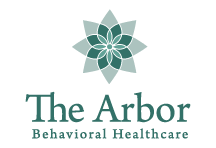The Diagnostic and Statistical Manual of Mental Disorders is what treating professionals look at when diagnosing someone with a mental illness or substance use disorder. There are certain criteria that need to be met in order for someone to be diagnosed with a substance use disorder. The newest edition, the Fifth Edition, was released by the American Psychiatric Association in 2013. Continue reading to learn more about what the DSM-5 says about substance use disorder.
DSM-5: 11 Classes of Drugs
- Alcohol
- Caffeine
- Cannabis
- Hallucinogens
- Inhalants
- Opioids
- Sedatives
- Hypnotics/anxiolytics
- Stimulants
- Tobacco
- Other/unknown substances
DSM-5: 11 Diagnostic Criteria
- The individual may take the substance in larger amounts or over a longer period than was originally intended.
- The individual may express a persistent desire to cut down or regulate substance use and may report multiple unsuccessful efforts to decrease or discontinue use.
- The individual may spend a great deal of time obtaining the substance, using the substance, or recovering from its effects.
- Craving is manifested by an intense desire or urge for the drug that may occur at any time but is more likely when in an environment where the drug previously was obtained or used.
- Recurrent substance use may result in a failure to fulfill major role obligations at work, school, or home.
- The individual may continue substance use despite having persistent or recurrent social or interpersonal problems caused or exacerbated by the effects of the substance.
- Important social, occupational, or recreational activities may be given up or reduced because of substance use.
- Risky substance use may take the form of recurrent substance use in situations in which it is physically hazardous.
- The individual may continue substance use despite knowledge of having a persistent or recurrent physical or psychological problem that is likely to have been caused or exacerbated by the substance.
- Tolerance is signaled by requiring a markedly increased dose of the substance to achieve the desired effect or a markedly reduced effect when the usual dose is consumed.
- Withdrawal is a syndrome that occurs when blood or tissue concentrations of a substance decline in an individual who had maintained prolonged heavy use of the substance.
If you are struggling and you see yourself in these diagnostic criteria for substance use disorder, Arbor Behavioral Healthcare wants to talk to you. We know you might be hesitant, but we can help you. There is a life worth living beyond the use of the substance. We want to help. Call us now at (844) 413-2690. We want to speak with you. Call now, you won’t be disappointed.


